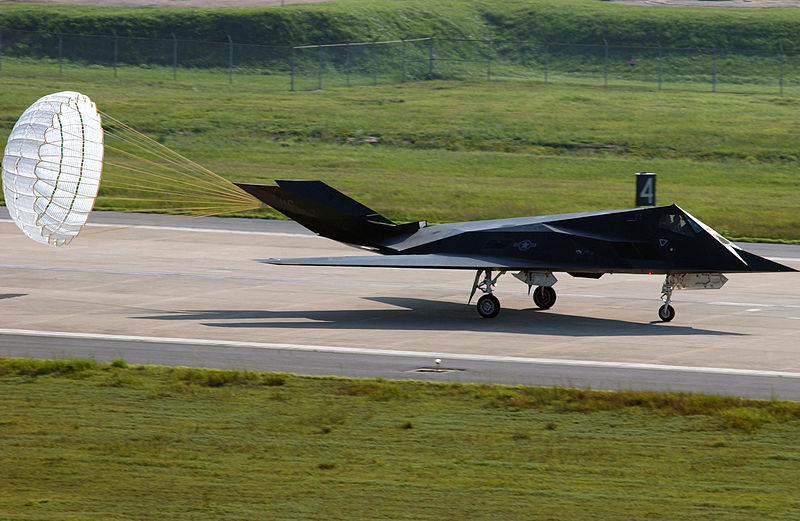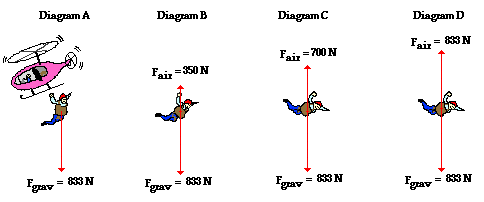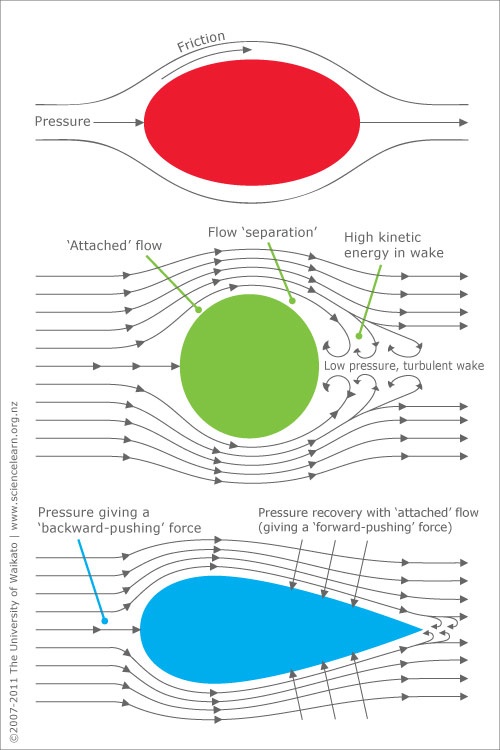Home Lift Drag Banking Engines Missiles Bibliography
Drag

http://en.wikipedia.org/wiki/File:F-117A_Landing_Drag-chute.jpg
Drag force exists in any
motion through a fluid and acts opposite to the direction of
motion. A pilot moving to right experiences a drag force
acting to the left. The cause of drag is the result of
numerous collisions with air molecules. When a Lockheed
Martin F-22 Raptor is cruising through the sky, it is colliding
with many individual particles. Although the air molecules
collide with the jet in all directions, the net collisions is
greater in the direction the jet is moving. This is
because the front of the jet is moving towards the air molecules
and the rear is moving away from them, resulting in more
collisions on the front of the jet. Because of the law of
conservation of momentum, momentum between the air molecules and
the jet is conserved, resulting in a net force acting against
the motion of the jet. Drag is affected by four different
variables: air density, velocity, cross section area, and shape.
An object with a higher velocity also creates more drag, which is why a person reaches terminal velocity when they go skydiving The increase in velocity results in an increase in the bulk flow of fluid colliding with the object in motion. In the case of a skydiver, the faster he moves the more air collides with him. F-22 Raptors can move at a top speed of roughly 670 m/s, which generates immense amounts of drag. However fighter jets have streamlined shapes to minimize drag force.
A streamlined shape decreases drag in two
ways. It reduces the area and the coefficient of drag of
the jet. Reducing the area also reduces the total amount
of air that collides with the jet, which in turn reduces the
momentum loss due to collision. The parachute above is one
example of how large surface areas can increase drag. If
parachutes had a smaller surface area, they would not be
effective in slowing skydivers or planes down. The role of
streamlining affects drag because it affects the direction in
which air molecules collide. A streamlined object would
collide with most of the air molecules at an angle, reducing the
momentum lost due to collision.
- FD =
An object with a higher velocity also creates more drag, which is why a person reaches terminal velocity when they go skydiving The increase in velocity results in an increase in the bulk flow of fluid colliding with the object in motion. In the case of a skydiver, the faster he moves the more air collides with him. F-22 Raptors can move at a top speed of roughly 670 m/s, which generates immense amounts of drag. However fighter jets have streamlined shapes to minimize drag force.

